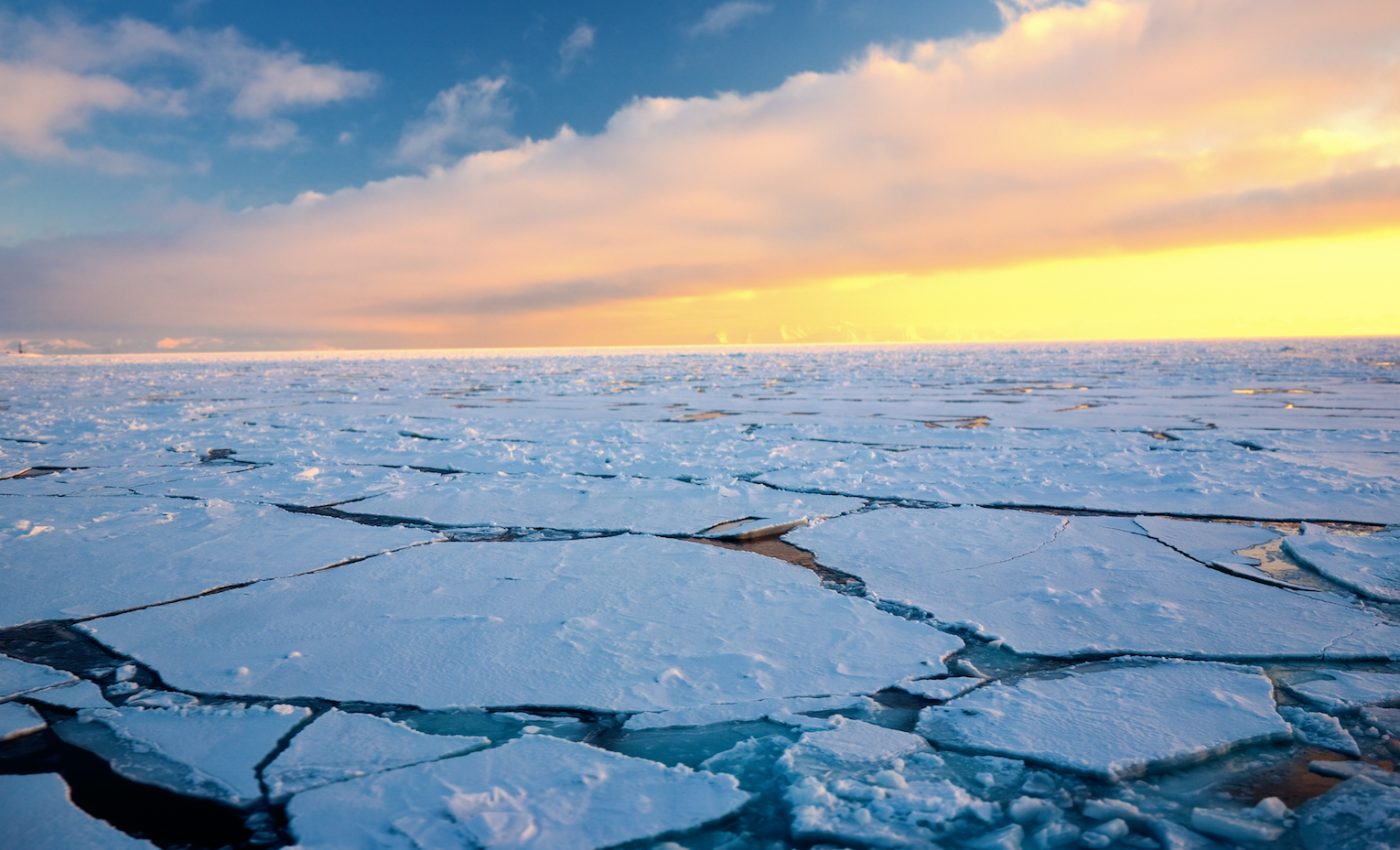
Young sea ice is melting before it can make its transarctic journey
Only 20 percent of the sea ice that forms in the Russian marginal seas of the Arctic Ocean actually reaches the Central Arctic to join the Transpolar Drift, according to a new study from the Alfred Wegener Institute. The experts determined that 80 percent of the young ice melts before it has a chance to leave its “nursery.”
The researchers said that this discovery not only takes us one step closer to an ice-free summer in the Arctic, but also suggests that the Arctic Ocean will lose an important means of transporting nutrients, algae, and sediments as the sea ice is diminished.
New sea ice is constantly being produced in the Russian marginal seas of the Arctic Ocean, which include the Barents Sea, Kara Sea, Laptev Sea, and the East Siberian Sea. A strong offshore wind drives the young ice into the open sea where it is eventually caught up in the Transpolar Drift, one of the two main currents in the Arctic Ocean.
Over the next two to three years, the ice is transported from the Siberian part of the Arctic Ocean across the Central Arctic to the Fram Strait, where it finally melts. Up until the year 2000, this entire journey was made by roughly half the ice from Russia’s shelf seas. Today, 80 percent of the new sea ice melts before it can become a year old and reach the Central Arctic.
“Our study shows extreme changes in the Arctic: the melting of sea ice in the Kara Sea, Laptev Sea and East Siberian Sea is now so rapid and widespread that we’re seeing a lasting reduction in the amount of new ice for the Transpolar Drift. Now, most of the ice that still reaches the Fram Strait isn’t formed in the marginal seas, but comes from the Central Arctic,” said study first author Dr. Thomas Krumpen.
“What we’re witnessing is a major transport current faltering, which is bringing the world one major step closer to a sea-ice-free summer in the Arctic.” Sea-ice thickness measurements taken in the Fram Strait have confirmed this new trend.
“The ice now leaving the Arctic through the Fram Strait is, on average, 30 percent thinner than it was 15 years ago. The reasons: on the one hand, rising winter temperatures in the Arctic and a melting season that now begins much earlier; on the other, this ice is no longer formed in the shelf seas, but much farther north. As a result, it has far less time to drift through the Arctic and grow into thicker pack ice,” explained Dr. Krumpen.
The ice that is still carried by the Transpolar Drift to the Fram Strait contains significantly fewer particles like algae, sediments, and nutrients upon arrival. The ice that reaches the Fram Strait is made up of less material and has a different composition. “Instead of Siberian minerals, we’re now finding more remains of dead algae and microorganisms in our sediment traps,” said study co-author Eva-Maria Nöthig.
Ultimately, changes in the particles transported by sea ice could permanently alter the biogeochemical cycles and ecological processes of the central Arctic Ocean.
The study is published in the journal Scientific Reports.
—
By Chrissy Sexton, Earth.com Staff Writer
Paid for by Earth.com













